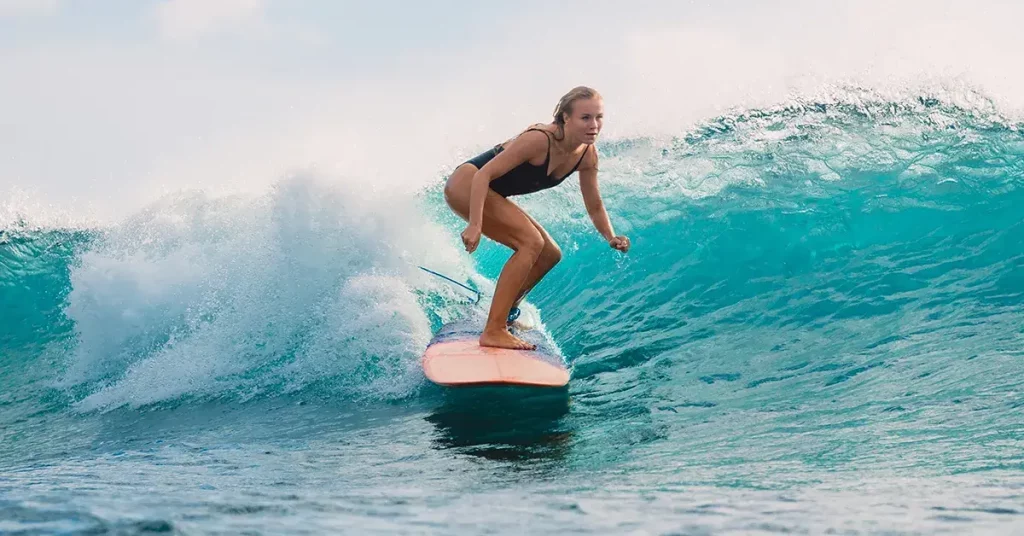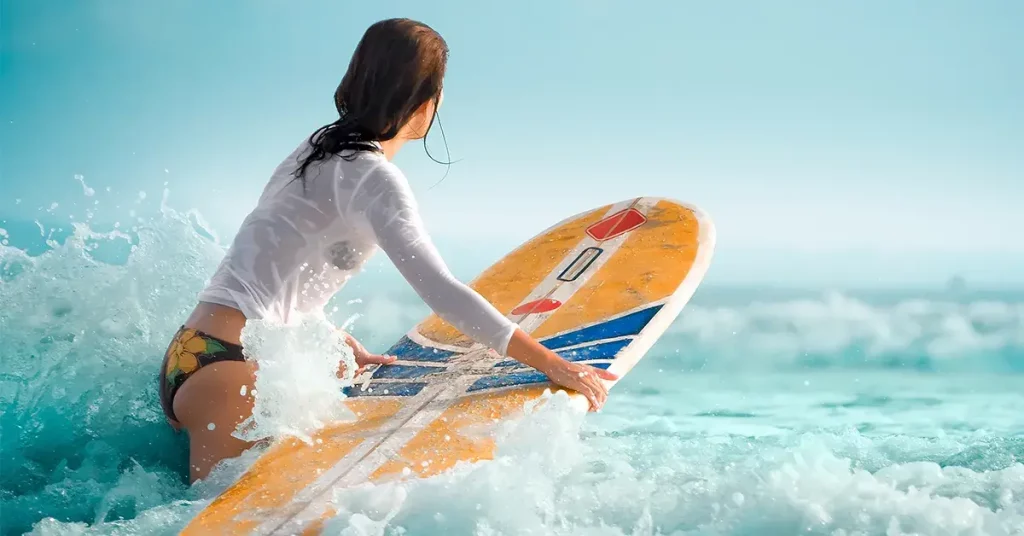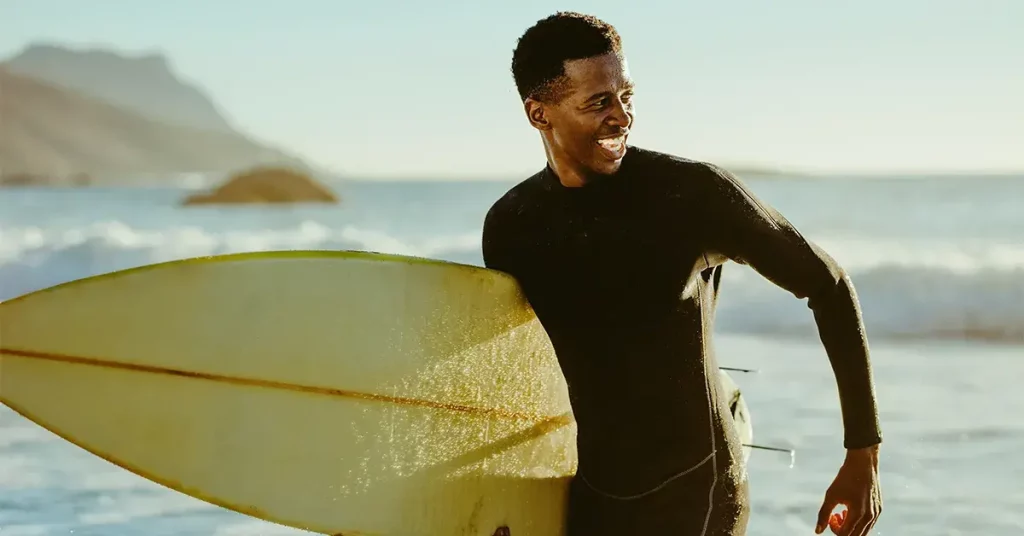If you’re staring longingly at the surfers having fun in the waves while you’re watching from shore, it might get you wondering—how long does it take to get good at surfing?
Learning to surf is a sport that takes over 100 hours of practice, but within less than two hours, you can stand up on your board. And within a few weeks, you should be improving your skill level.
As formerly non-surfers ourselves, we understand firsthand the desires and struggles of wanting to get good at surfing.
So, before you turn to a YouTube tutorial for tricks and pointers, read on to learn about what it takes to get good at surfing and tips for learning faster.
Understanding the Learning Curve
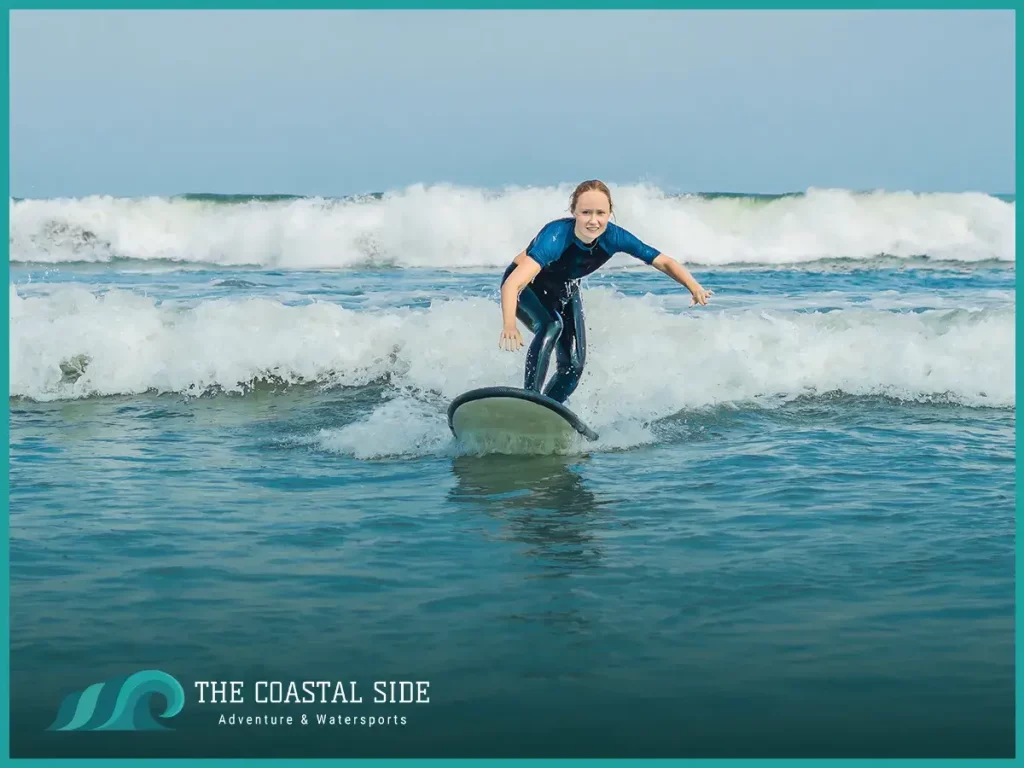
Everyone starts surfing with different fitness levels and balance. So, it’s impossible to place a one-size-fits-all time stamp on how long it’ll take you to learn to surf.
Furthermore, since some people might be able to dedicate every day to surfing while others can’t, it’s crucial to measure surfing proficiency in hours, not days or months.
For this reason, a rough estimate of how long it takes to get good at surfing is 150 hours.
That number likely sounds overwhelming. But consider this—that’s less than four 40-hour workweeks. So, if you’re on sabbatical or are a teacher with the summers off, you can technically get good at surfing in less than a month.
A Surfer’s Learning Journey
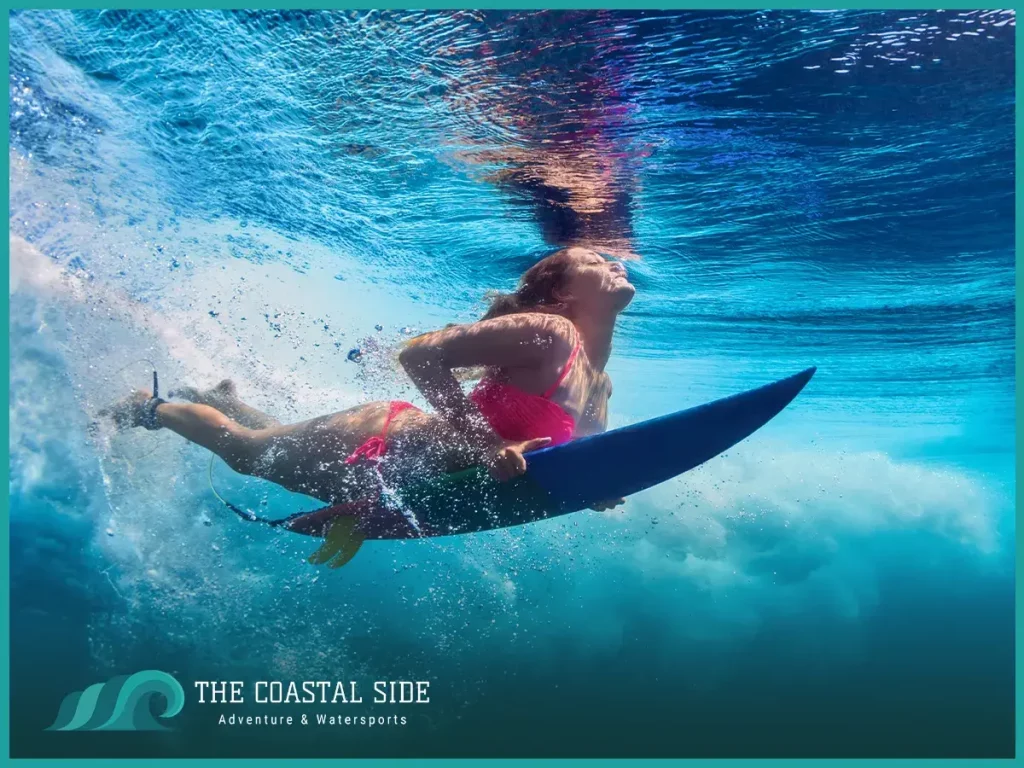
It’s unwise to hop on a board and paddle out to a wave face, expecting to get up on your board as a first-timer. But the good news is that with the right instructor, you should be able to ride your first wave in under two hours.
So, below is a run-down on how long it takes to learn specific surfing techniques:
- Stand up on your board in shallow water (30 minutes)
- Catching your first whitewater wave (less than 2 hours)
- Paddling without falling into the ocean (30 hours)
- Duck diving beneath a large wave (60 hours)
- Riding an unbroken wave (120+ hours)
- Riding green waves (150+ hours)
Variables That Impact Learning
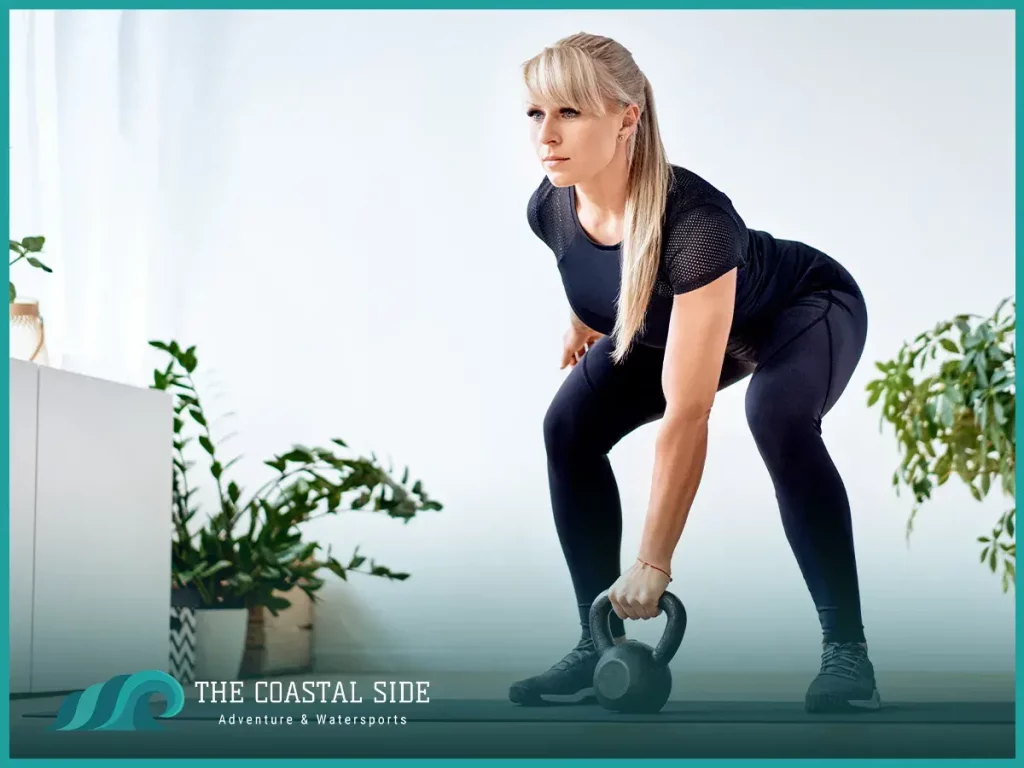
We hate to break it to you, but you can’t go from a couch potato to a pro surfer. Instead, the progress you make surfing will depend on the following elements:
- Your current fitness level
- Picking a surfing spot suitable to your skills
- The quality and suitability of your surfboard
- Whether you hire an instructor or teach yourself
- Local conditions and the presence of warm water
Even though most people can’t practice surfing every day, you can actively work to improve your skills by focusing on your fitness when you’re out of the water.
Some excellent exercises to tone and build balance include kettlebell swings, ice-skater squats, and dumbbell bent rows.
The Importance of Surf Lessons
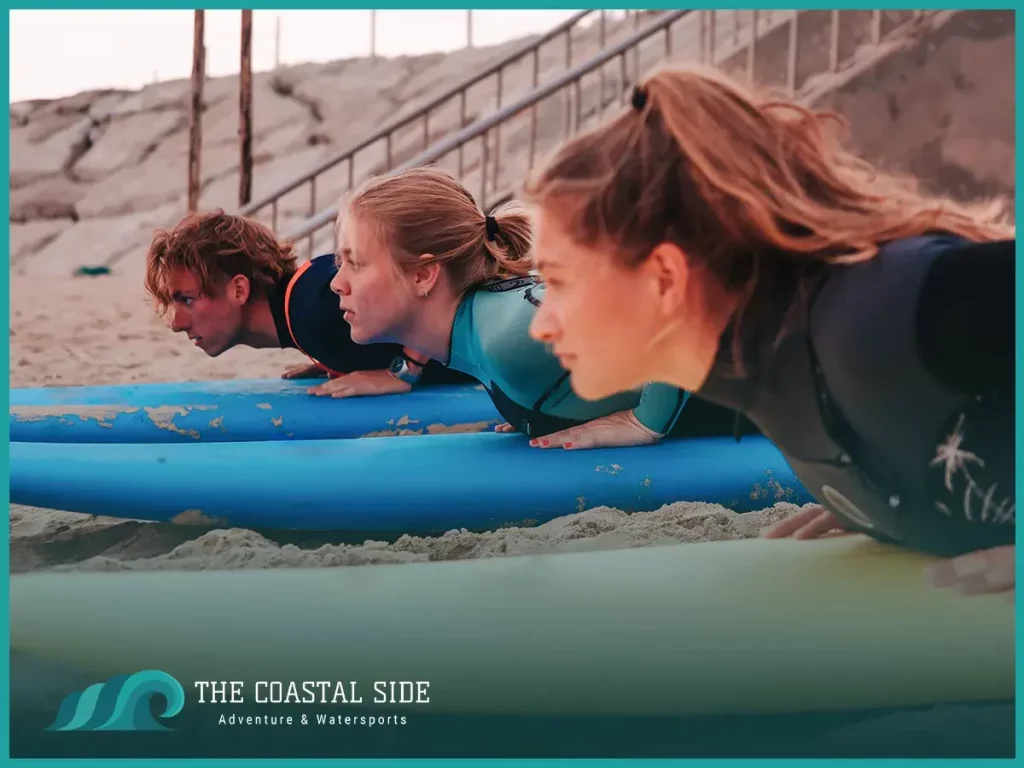
You can rent a surfboard at many beach destinations. But it’s unlikely you’ll succeed if you attempt to ride a wave on your own with no previous experience.
For this reason, we encourage you to sign up for surf lessons with a licensed instructor. Certified surfing instructors must adhere to the International Surfing Association’s governing body for training techniques and safety.
In addition to teaching you basic techniques, they’ll paddle you out to catch your first waves. Telling you when to get up on your board. Doing so will help you understand how to catch a wave. Which is one of the most challenging skills for beginner surfers.
If you don’t have much money to spend on surfing, even one surf lesson can help you catch more waves and decrease your surfing time learning curve.
Learn Surfing With the Right Surf Board

When considering the question, “How long does it take to get good at surfing?” it’s crucial you’re working with the right surfboard.
intermediate surfers and world-class pro surfers can get away with using shorter boards. But beginners should use longer and wider surfboards. That’s because it’ll make it easier to push on your board to master the pop-up technique.
A longer and wider surfboard will also help you build confidence and learn faster. You’ll be likely to fall less in your early days of learning.
That said, as you gain experience and pick your favorite surf spots, moving to a shorter board will help you do a duck dive and other techniques that take dozens of hours to learn.
Choosing the Right Waves
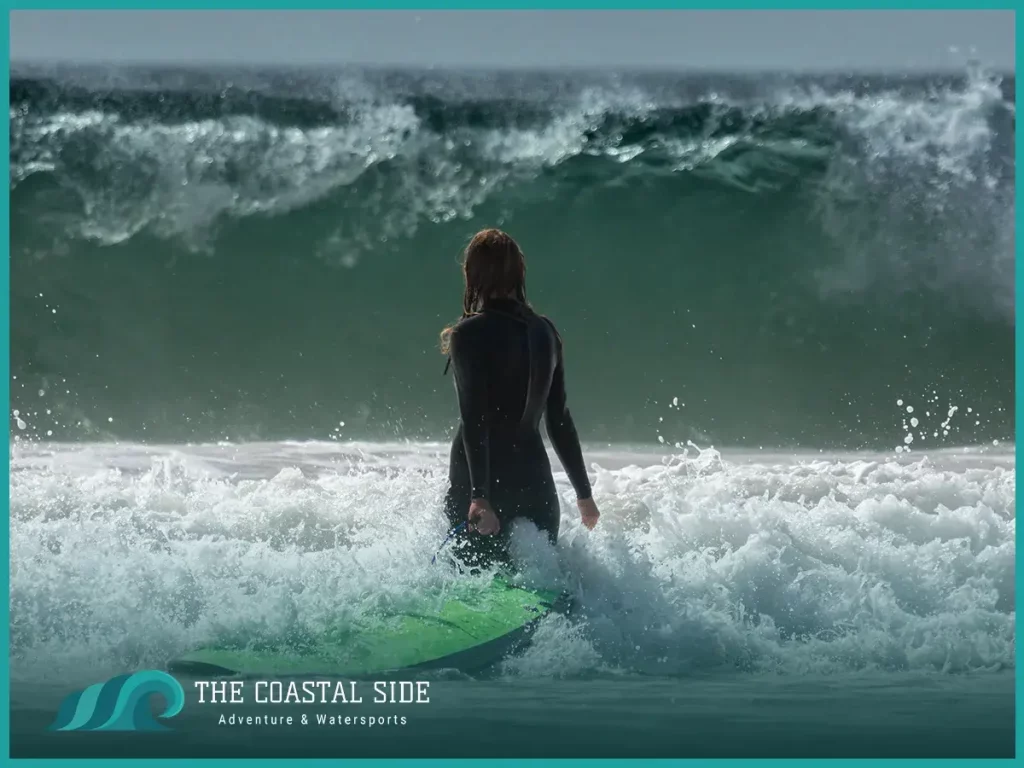
The best way to select a good place to surf is to search for a beach break other surfers use and watch them. Then, wait for a moment until you see where the best rides start from. Point your surfboard towards it, and test your paddling ability by making a bee-line there.
How much time you wait to catch your first wave will depend on your lineup. Which is when you’ll need to pick a point of reference with two fixed objects.
Beginner Surfer Tips
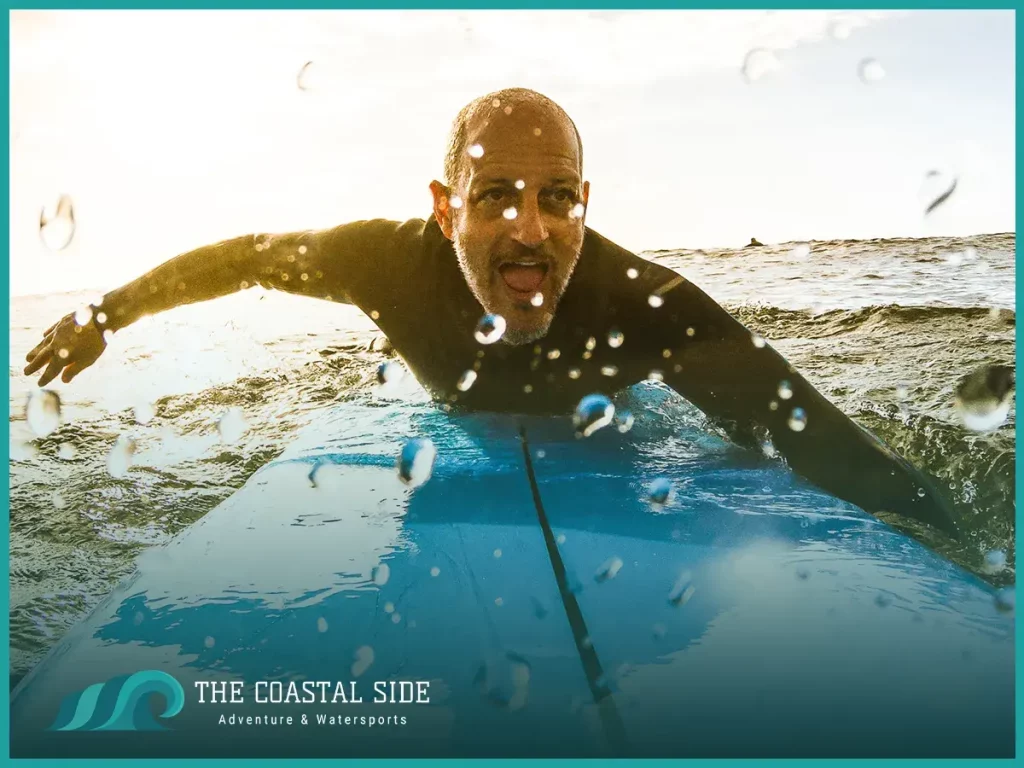
Having said you’ve surfed comes with pride, as this isn’t a sport that many people try. So, below are some tips to help you have a smooth experience on the water:
- Make surfing and paddling safety the first thing you focus on
- Don’t worry about what other surfers are doing; focus on yourself
- Ride your first board and more near the shore
- Avoid riding unbroken waves
Are You Ready to Ride Waves?
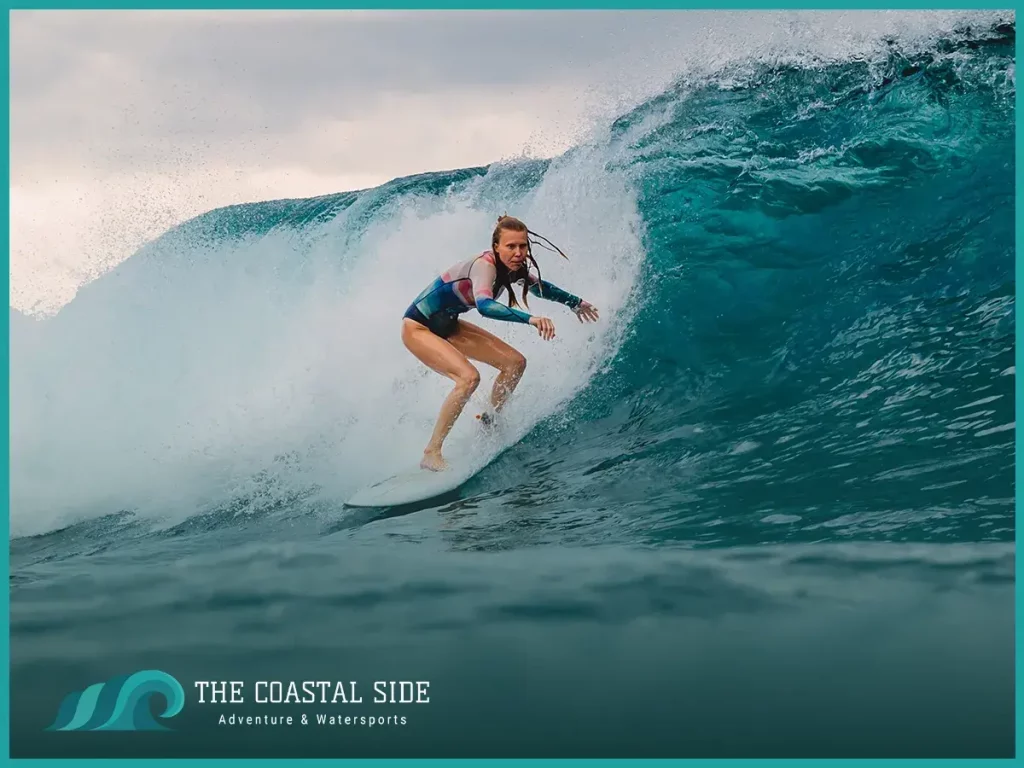
So, how long does it take to get good at surfing? You can get proficient in as little as three weeks. But the hours you put into learning are more important than the number of days.
Furthermore, the surf spot where you practice makes a big difference. Colder water, strong waves or night surfing can make it more challenging to learn the basics, and find fewer moments to stand on your board.
The good news is that everyone has their own experience based on their agility and effort. So, start this week by practicing and toning your body’s muscle memory. Before you know it, you’ll be moving from a beginner to an intermediate surfer in no time!

